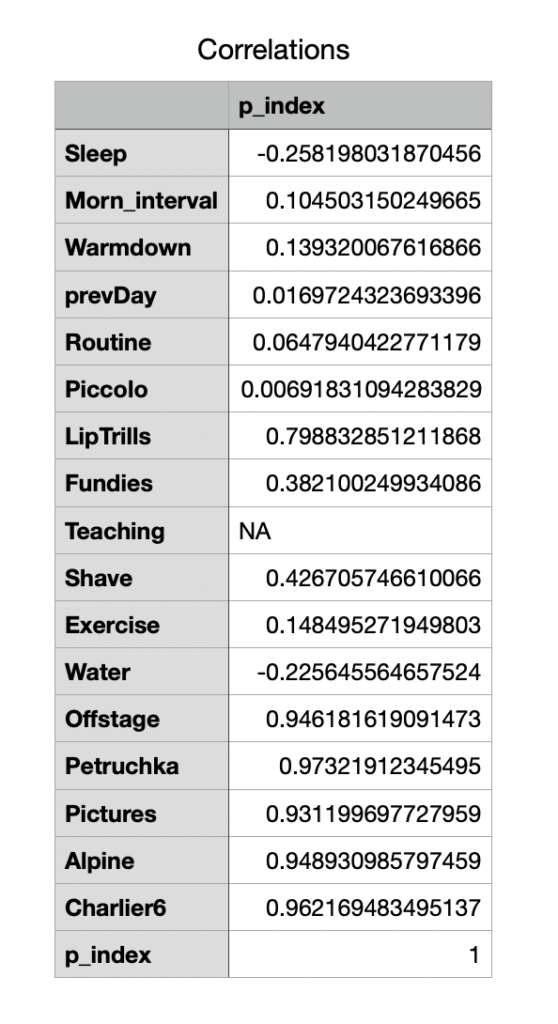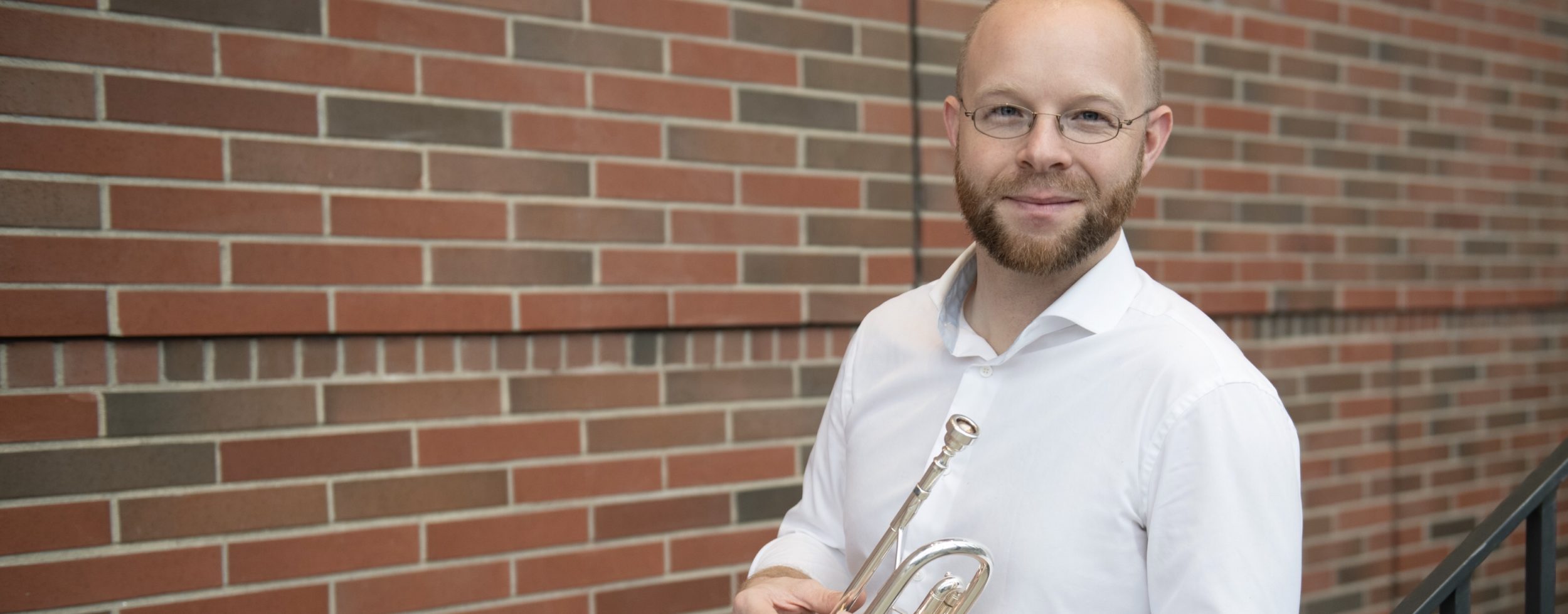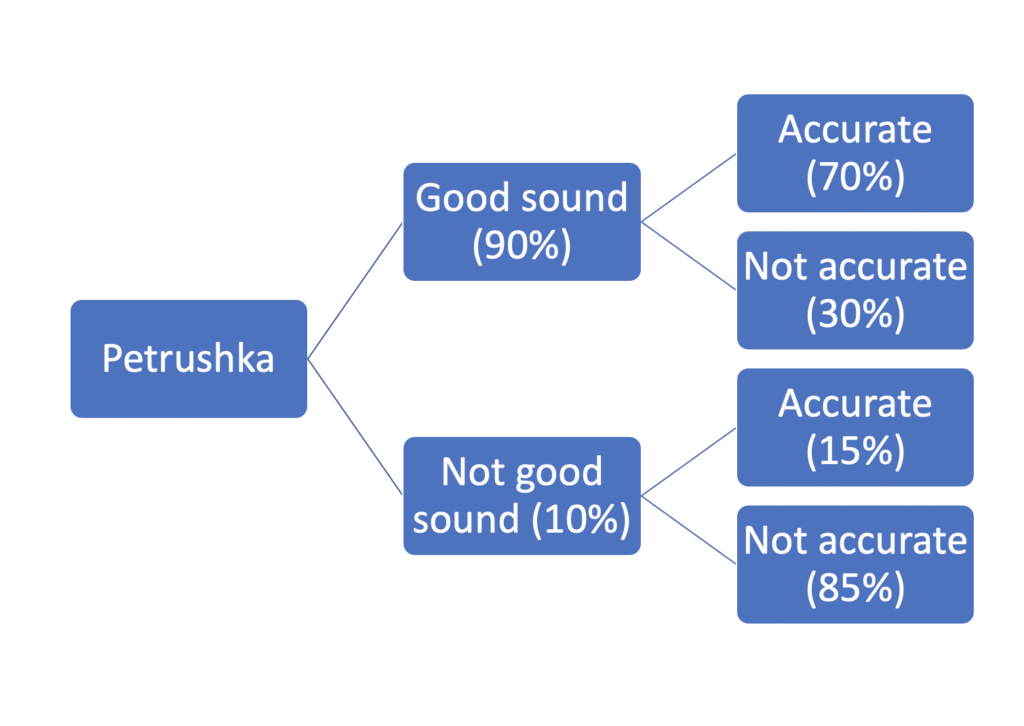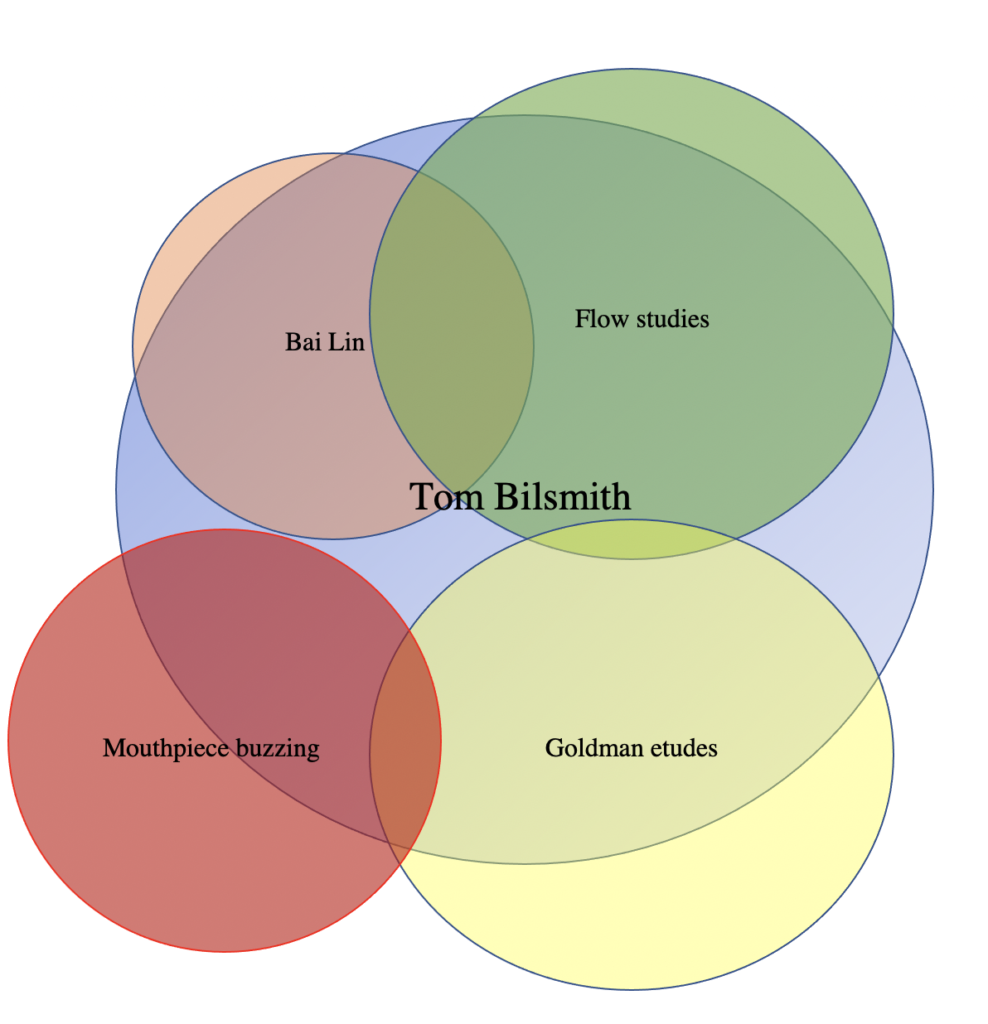This presentation/paper first explores the timeline of a programming project that greatly informed my approach to the trumpet, and resulted in an article in the Journal of the International Trumpet Guild of the same name. We then go through the mechanics of brass playing, several techniques that set participants up for success in the practice room, and delve into a more philosophical understanding of what the project means.
Point 1: A Problem, a Process, a Solution
My problem, a double buzz, but only occasionally
- Pines of Rome offstage solo, ascending lines, middle-high register
- Accompanied by other problems: stiffness, thinness, response
- Some other clues: at its worst in an audition, when I was tired, “over-practicing”
For science! A systemic process
- When/where. Causes? Symptoms? (variable tracking)
- “Compound problems”: Problems with more than one cause (correlation matrix), or downstream effects (Baye’s Theorem)
The revelation
- When I worked on the offstage solo, everything else was generally better.
- Double buzz caused by too taut a vibrating surface, either pulling lips back or overly tense, or both
Point 2: Insight Examined
The problem with “trying hard”
- Creates/manifests tension
- Not conducive to fixing underlying problems
The mechanism, a concept
- Trumpet is a fairly simple mechanism – air across a reed (like the voice), resonating column inside the trumpet, all aspects are part of the system, related, and act on each other.
- Biggest difference between voice and trumpet is where in the chain articulation happens:
- In voice, vibrating surface is before the articulator (vocal chords before tongue)
- On trumpet, after (tongue controls flow of air, quickly stopping vibrating surface (lips), then equally quickly restarted by airflow
- Stopping airflow is easy, but lips have to be ready to restart (therefore, articulation and resonance are inextricably connected)
- One other thought: lips are effectively a double reed, and should remain the right distance. Overarticulating, overblowing can blow them apart, causing a different kind of response problem (often called “overblowing”)
- Tonguing really hard can “jumpstart” vibration, but something has to keep the lips together (muscle), which increases tension, which requires even harder tonguing, which, which… the system breaks down.
- Better: lips stay relaxed, ready to receive the air
- Best: Breathe life into the music, let the body find the easiest path to expression
Angels and demons
- Resistance lies in the body, not the trumpet
- We can’t independently buzz our lips, only the flow of air can vibrate lips (grasshopper vs bee)
- “Muscle” is a coordinating activity, endurance mostly mental
Point 3: Concept to Reality
The fundamentals
- Everyone will require different things, but the principals are the same
- Some ideas:
- free buzzing (to feel the lips vibrating freely)
- lip glissandi (unifying flow, minimizing lip tension, allowing air to do its job)
- low register articulation and flexibility (excess lip tension check)
- pedal tones (mouthpiece and instrument, train the brain to accept less tension, more flow)
- Steenstrup (4 step method… a masterclass unto itself)
Training lizard brain with Herbert L. Clarke
- Applying all of the above to different registers, patterns, dynamics, articulations, etc
- Goal: to train lizard brain to do it for us, so we can be free to make music
- Teach the body what to do when the mind is making music, like a fire drill
- When it’s time to make music, let the body do its job
- “Trust is earned,” David Bilger
What to avoid: maladaptive habits, a short checklist
- Fill head with best music possible, study scores, DISCERN!
- Work small to large: air attacks, notes, slurs, articulations, intervals, measures, phrases, lines, 2 lines, 4 lines, sections, pages, pieces
- Develop “override cues”
- Mental or physical reminders to choose your “new way”, not your “old way” (Kronk, angel and devil)
- Centering
- I use air patterns!
Point 4: A Pliable Mind
“Guru is everywhere”
The Blue Parakeet
Special thanks to advisors on this project who contributed both in substance and in inspiration: David Bilger, Tom Hooten, Dominik Gaus, Micah Wilkinson, and Phil Hembree.






